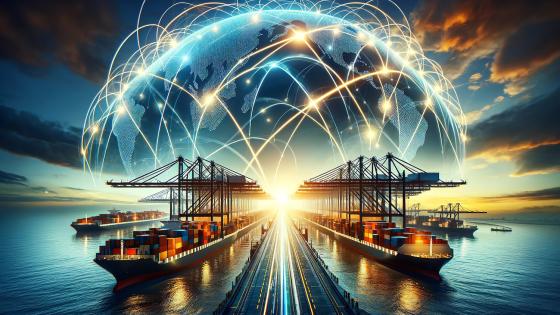During the 1980s and 1990s, there was considerable concern about the possible role of globalisation in contributing to rising income inequality, especially in the United States. This concern was based on standard economic theory: since the 1941 Stolper-Samuelson paper, we’ve known that growing trade can have large effects on income distribution, and can easily leave broad groups, such as less-skilled workers, worse off.
After economists looked hard at the numbers, however, the consensus was that the effect of trade on inequality was probably modest. Recently, Ben Bernanke cited these results – but he recognised a problem: “Unfortunately, much of the available empirical research on the influence of trade on earnings inequality dates from the 1980s and 1990s and thus does not address later developments. Whether studies of the more recent period will reveal effects of trade on the distribution of earnings that differ from those observed earlier is to some degree an open question.”
But the question isn’t really that open. It’s clear that applying the same models to current data that, for example, led William Cline of the Peterson Institute to conclude in 1997 that trade was responsible for a 6% widening in the college-high school gap would lead to a much larger estimate today. Furthermore, some of the considerations that once seemed to set limits on the possible inequality-promoting effects of trade now seem much less constraining.
There are really two key points here: the rise of China, and the growing fragmentation of production.
First, thanks to the rise of China, OECD imports of manufactured goods from developing countries have continued to rise rapidly since the early 1990s. Cline’s estimate of income distribution effects was based on data from 1993, when US imports of manufactures from developing countries were approximately 2% of GDP; now that number is close to 5%, and rising rapidly.
At the same time, the rise of China has prevented, for the time being, a development that I and others expected to mitigate the effects of trade on income distribution: up-skilling by the developing country exporters. “As newly industrializing countries grow,” I wrote in 1995, “their comparative advantage may shift away from products of very low skill intensity.” And that’s exactly what happened – for the countries that were the major exporters of manufactured goods to the OECD then. As John Romalis has shown, the exports of the original group of Asian newly-industrialising economies have shifted dramatically away from labour-intensive toward skill-intensive products.
But along has come China, which is far more labour-abundant now than the NIEs were then. A simple indicator is relative wage rates: in 1990, according to the US Bureau of Labor Statistics, the original four Asian NIEs had hourly compensation costs that were 25% of the US level. Now the BLS estimates that China’s labour costs are only 3% of US levels.
In 1995 I also believed that the effects of trade on inequality would eventually hit a limit, because at a certain point advanced economies would run out of labour-intensive industries to lose – more formally, that we’d reach a point of complete specialisation, beyond which further growth in trade would have no further effects on wages. What has happened instead is that the limit keeps being pushed out, as trade creates “new” labour-intensive industries through the fragmentation of production.
For example, the manufacture of microprocessors for personal computers is clearly a highly sensitive, skill-intensive process. Intel’s microprocessor production, however, now takes place in two stages: the “fabs,” which print the circuits on disks of silicon, are all located in high-wage advanced countries, but the assembly and testing, in which those disks are cut into individual chips and tested to be sure that they work, is conducted in China, Malaysia, and the Philippines.
Outsourcing of services, in both directions, adds to the possibilities of unequalising trade. The skill-intensive pieces of production processes that mainly take place in the third world are often now located in the OECD – for example, Lenovo, the Chinese computer company, has its executive headquarters in North Carolina.
What all this comes down to is that it’s no longer safe to assert, as we could a dozen years ago, that the effects of trade on income distribution in wealthy countries are fairly minor. There’s now a good case that they are quite big, and getting bigger.
This doesn’t mean that I’m endorsing protectionism. It does mean that free-traders need better answers to the anxieties of those who are likely to end up on the losing side from globalisation.

